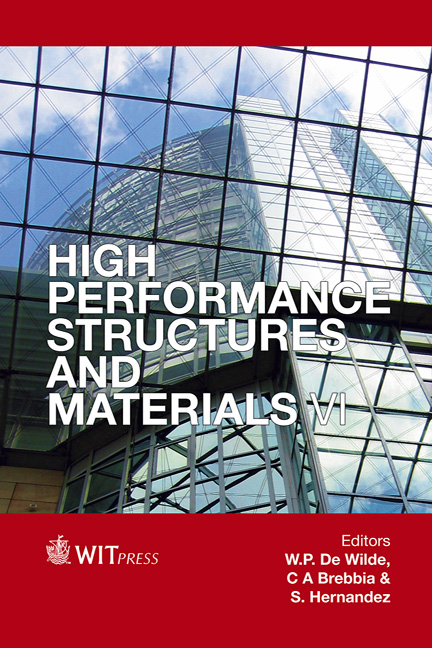Mechanical Performance Of Bacterial Cellulose Nanofibre-reinforced Epoxy Composites
Price
Free (open access)
Transaction
Volume
124
Pages
8
Page Range
379 - 386
Published
2012
Size
5,097 kb
Paper DOI
10.2495/HPSM120331
Copyright
WIT Press
Author(s)
H. Takagi, A. N. Nakagaito & K. Uchida
Abstract
This paper reports the preparation and characterization of a new type of natural fibre nanocomposite, which is composed of bacterial cellulose nanofibre and thermoset epoxy resin. Before combining with epoxy resin, the bacterial cellulose nanofibre was prepared by a freeze-drying process. The effect of nanofibre loading on the mechanical properties of the polymer composites has been investigated. The tensile strength of the composites increased with increasing fibre content, and reached the maximum tensile strength value of about 74 MPa, reaching almost twice the strength of the neat resin. This strength value was quite low as compared with a theoretical estimation. This discrepancy seemed to be derived from weak interfacial adhesion. Keywords: bacterial cellulose fibre, composites, epoxy resin, strength, modulus, fracture, debonding. 1 Introduction In recent years, much attention has been focused on plastic waste problems and resource depletion in a global scale [1]. To build a sustainable society, research and development of natural fibre reinforced polymer composites have been carried out over a worldwide scale [1]. Some kinds of natural fibre composites exhibit fully-biodegradable nature, and therefore they can be disposed off easily and at the same time, there is no additional green house gas emissions even after burning them (namely carbon neutrality) [2, 3]. Most of conventional studies on natural fibre composites have been made by using macroscopic natural fibre bundle or single natural fibre (e.g. pulp) as a reinforcement [4–10]. In the case of macroscopic natural fibres, they have often
Keywords
bacterial cellulose fibre, composites, epoxy resin, strength, modulus, fracture, debonding.





